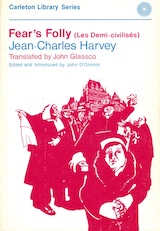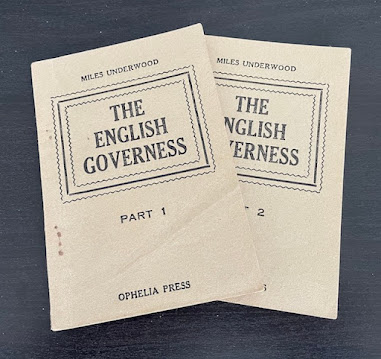For the day, a list of fifteen novels by Quebecers – born and bred – all deserving more attention. In each case, the image presented is the cover of the edition I read. Descriptions are short, but clicking on the links will give a better idea as to why they were selected.
Was 1960 the banner year for Quebec literature? 1962? 1916?
The second French-language novel – following son Philippe-Ignace-Francois's L'influence d'un livre (1837) – Les Anciens Canadiens is set in the decades surrounding the fall of New France. Steeped in history, culture, and the supernatural, I've read it twice, but only in translation.
Rosanna Eleanor Leprohon
1868
A novel I read in French translation, though it was composted in English. Makes sense in a way because Mme Leprohon was even more popular amongst French readers. Like Les Anciens Canadiens, it leans heavily on what would've then been described as Canadien traditions and culture. A moving tale of love and betrayal.
1909
Condemned by Mgr Paul Bruchési, Archbishop of Montreal, as "ignoble pornographie," you can understand the attraction. La Scouine is populated by dislikable, immoral, and hypocritical characters, clergy included. It is, in short, the anti-roman a terre. Sadly, Laberge paid a real price in writing this novel.
A gang of thieves and con artists leave New York City for rural Maine so as to get in on the scam pushed by a blind faith-healer, only to find there there is no grift. The 1919 Hollywood adaptation is considered one of the great lost silent films. Since writing my 2011 review twenty-four more seconds have been found. I couldn't be happier.
A Great War nightmare in which Germans invade Quebec City, seize the Legislative Assembly, and slaughter citizens, this novel was almost certainly inspired by propaganda involving supposed atrocities committed in Belgium. Civil servant Barthe's lone novel, it is itself propaganda.
No other Montreal family has been so remarkable. Though a novel, Marion provides the most intimate glimpse of the Eatons' struggles against racism and poverty. Winnifed was a successful novelist with a career in early Hollywood. Imagine!
Les Demi-civilisésJean-Charles Harvey
1934
Another banned book, the villain this time is Jean-Marie-Rodrigue Villeneuve, Archbishop of Quebec, who condemned it for criticizing religion. It does not. What Les Demi-civilisés does criticize is the Roman Catholic Church. The novel has been translated twice, but John Glassco's is the one to read.
1944
The craziest Quebec novel I've read thus far, in Erres boréales massive heaters have been placed in the Gulf of St Laurence so as to make Quebec a tropical paradise. A travelogue of sorts, the story follows friends as they explore the province, now an independent country with palm trees.
Roger Lemelin
1948
Roger Lemelin's first book, for decades Les Plouffe stood second only to Gabrielle Roy's Bonheur d'occasion as the best known French Canadian novel. The television series it inspired made for essential viewing. So why is Mary Finch's translation not in print? I blame Bertelsmann.
1960
The story of a washed up man who somehow manages to get a job in a shop selling stationary, religious items, and books. After a time, the proprietor comes to trust him with selling literature banned by the Catholic Church. Le Libraire was first published in France, not Quebec... 'cause, you know, the Church.
1960
First published in Paris by Olympia Press, The English Governess is both this country's finest and best selling work of erotica. That said, I much prefer Harriet Marwood, Governess, the more elegant version of the love story, published fourteen years later.
1960
A literary editor is presented with a bad manuscript by a good looking woman. He reworks, remakes, and remodels, crafting a work that is both a critical and commercial success. A novel of obsession, it is vaguely Nabokovian – which is always a plus.
John Buell
1962This writer is far better known for his first novel,
The Pyx (1960), but it was the second that caused critic Edmond Wilson to place Buell alongside Marie-Claire Blais as one of Canada's great writers. Of the nineteen novels I've helped return to print, this is my favourite.
The Damned and the Destroyed Kenneth Orvis
[Kenneth Lemieux]
1962
Another novel I helped usher back to print, The Damned and the Destroyed is set during the earliest days of Jean Drapeau's first term. Its hero, a Korean War vet, is hired to go after the heroin ring polluting the veins of a rich man's daughter. Lee Child is a massive fan.
Une Chaîne dans le parcAndré Langevin
1974Jack McClelland considered this novel the best to have come out of French Canada since
Bonheur d'occasion. Sadly, sales did not in any way match expectations. Alan Brown's 1976 translation received no second printing and has been out of print ever since. The novel is a masterpiece.
Bonne fête!










.jpg)



















